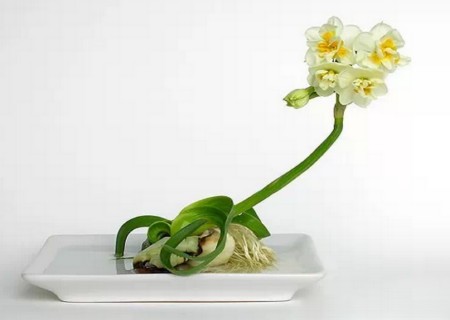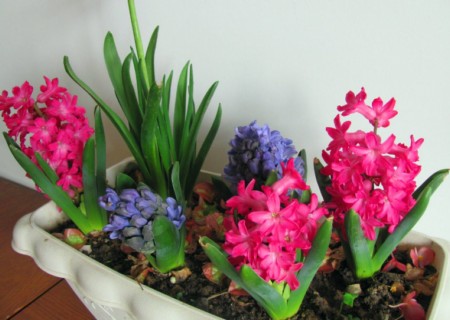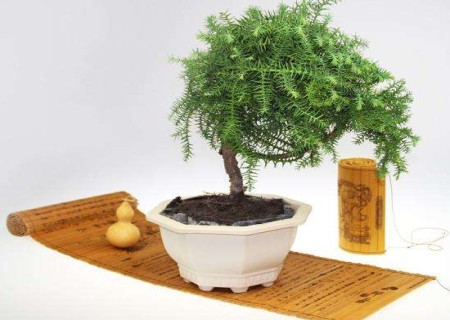How to deal with potted daffodils after blooming? How do you raise it?
Daffodils in the living room can make people feel quiet and warm. The living room is a place for family reunion and reception, suitable for choosing gorgeous flower arrangement and noble and generous daffodils, which can absorb the noise emitted by the home, absorb the exhaust gas from the home, and release fresh air. From the perspective of physics, it reduces the extra burden in more and more space, and a comfortable home is a good home with fengshui.
Many people like to raise daffodils, but they often think that daffodils can only blossom once, so they buy them and throw them away year after year. If cultivated, daffodils and hyacinths can blossom for many years, the key is to provide sufficient nutrients and cultivate fat and plump bulbs. Next, let's take a look at how to deal with and breed it.

1. How to deal with potted daffodils after flowering
1. Choose the vegetable garden or nursery land with leeward to the sun and deep soil layer, and build a high ridge after deep ploughing and raking, and trench on the ridge, in which the flowering bulbs are buried, and the leaves are preserved naturally. A month later, the leaves withered and dormant, at this time to dig up the bulb, cut off the fibrous root, and cut off the withered and yellow leaves along the base, and then bury the bulb at a depth of 10 cm, while applying rotten cake fertilizer or human feces and urine, and then rake flat. (note: do not save trouble and bury things in the flowerpot, because the bulbs have to spend the long seasons of spring, summer and autumn in the soil, especially in summer and autumn, with high temperature and heat, the bulbs are buried in them, and there are no leaves above. If you forget to water and fertilize them, it will cause drought and death. )
2. After dealing with the bulb, the latter work is the daily maintenance and management. at ordinary times, as long as we pay attention to give the garden sufficient nutrients and keep the garden moist without stagnant water, the bulb can grow naturally.
Wait until November or December, and then dig out the bulb, then you will find that the old bulb has rotted and empty, but there are many bulbs large and small around it. Pick out those bulbs with many large buds, wash the soil above, peel off the brown skin film on the surface, and then leave them in the sun for a few hours, then use a knife to make a "ten" cut at the top of the ball, with a depth of no harm to the bud eyes in the scale. grow out with sharp buds and leaves.
4. Soak in clean water for 24 hours, wash the gelatinous mucus from the incision, and then carry on the normal aquaculture. Generally 3 days later, the white fibrous root can grow at the bottom of the ball, and the bud eye at the top of the ball will gradually sprout leaves. As for those small bulbs, because they would not blossom that year, they were allowed to grow in the soil for another year, and then dug up for aquaculture the following year.
Generally speaking, the daffodils wither after the Spring Festival. Usually people will throw away the daffodils that have bloomed, which is a pity. Narcissus is a perennial plant, it is reproduced by bulbs, if those flowering bulbs are buried in the soil, it can continue to grow and reproduce.
2. How to raise potted daffodils after flowering
During the Spring Festival, the daffodils wither, and people usually throw away the daffodils that have bloomed, which is a pity.
Narcissus is a perennial plant, it is reproduced by bulbs, if those flowering bulbs are buried in the soil, it can continue to grow and reproduce.
Choose a flowerpot with a leeward to the sun and a deep soil layer to bury the flowering bulb into it, and the leaves will be preserved naturally.
About a month later, the leaves withered and dormant, at this time to dig up the bulb, cut off the fibrous root, and cut off the withered and yellow leaves along the base, and then bury the bulb at a depth of 10 cm, while applying rotten cake fertilizer or human feces and urine, and then rake flat.
You can't save trouble and bury things in the flowerpot, because the bulbs have to spend the long seasons of spring, summer and autumn in the soil, especially in summer and autumn, when the heat is hot, the bulbs are buried in them, and there are no leaves on them. If you forget to water and fertilize them, it will cause drought and death.
After dealing with the bulb, the following work is the daily maintenance and management, usually as long as pay attention to give sufficient nutrients to the garden, while keeping the garden moist but without stagnant water, the bulb can grow naturally.
Wait until November or December, and then dig out the bulb, then you will find that the old bulb is rotten and empty, but there are many bulbs large and small around it.
Pick out those bulbs with many large buds, wash the soil above, peel off the brown skin film on the surface, and then leave them in the sun for a few hours, then use a knife to make a "ten" cut at the top of the ball, with a depth of no harm to the bud eyes in the scale. grow out with sharp buds and leaves.
Soak in clean water for 24 hours, wash the gelatinous mucus from the incision, and then carry on the normal aquaculture.
Generally 3 days later, the white fibrous root can grow at the bottom of the ball, and the bud eye at the top of the ball will gradually sprout leaves.
As for those small bulbs, because they would not blossom that year, they were allowed to grow in the soil for another year, and then dug up for aquaculture the following year.
Note a few points:
1. The temperature should not exceed 25 ℃, otherwise it will stop growing and go into dormancy, causing the bud to be yellow and shrivelled and dry.
2. There should be plenty of sunshine, otherwise the leaves will grow into garlic leaves
3. the water used should be clean, otherwise the roots will be polluted due to the deterioration of the water.
Time: 2019-05-31 Click:
- Prev

Post-anthesis culture method of potted hyacinth
Hyacinth is a flower species often cultivated by people. Potted hyacinth usually keeps the soil slightly wet and avoids being too wet or stagnant water, so that it can generally bloom in March of the following year. On the other hand, the method of pot planting is basically the same as that of planting in the ground, using 14 bulbs per pot of loose soil, applying sufficient basic fertilizer, putting it outside in the sunny place, and topdressing during the growing period.
- Next

Methods and points for attention of bonsai culture of Australian fir
Australian fir is an evergreen tree, generally potted for young trees, with a height of less than 2 meters. Crown steeple-shaped, dark green, crown epidermis often split or strip-like shedding; the new epidermis has bronzed luster. Stem erect, lateral branches whorled, horizontally extended. Branchlets distichous alternate, extending horizontally or slightly drooping
Related
- Fuxing push coffee new agricultural production and marketing class: lack of small-scale processing plants
- Jujube rice field leisure farm deep ploughing Yilan for five years to create a space for organic food and play
- Nongyu Farm-A trial of organic papaya for brave women with advanced technology
- Four points for attention in the prevention and control of diseases and insect pests of edible fungi
- How to add nutrient solution to Edible Fungi
- Is there any good way to control edible fungus mites?
- Open Inoculation Technology of Edible Fungi
- Is there any clever way to use fertilizer for edible fungus in winter?
- What agents are used to kill the pathogens of edible fungi in the mushroom shed?
- Rapid drying of Edible Fungi

